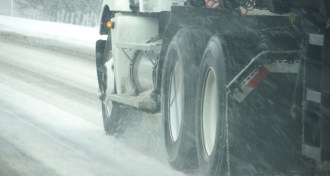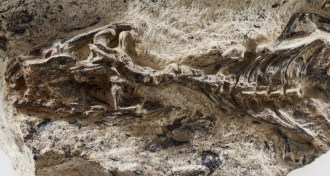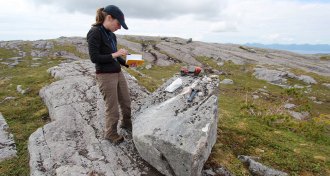Life
Sign up for our newsletter
We summarize the week's scientific breakthroughs every Thursday.
-
 Health & Medicine
Health & MedicineWhat we know — and don’t know — about a new migraine drug
A migraine prevention drug was recently approved by the U.S. Food and Drug Administration. But some questions about the therapy remain.
-
 Genetics
GeneticsPrivacy and consumer genetic testing don’t always mix
Interested in taking a direct-to-consumer genetic test? Here are some things you should know.
-
 Health & Medicine
Health & Medicine‘Outbreak’ puts the life cycle of an epidemic on display
At the Smithsonian National Museum of Natural History, the exhibit “Outbreak” highlights how infectious diseases shape our world.
-
 Genetics
GeneticsWhat consumer DNA data can and can’t tell you about your risk for certain diseases
Consumers face lots of choices and unanswered questions when they get personal genomic information related to disease risk from the Internet.
-
 Neuroscience
NeuroscienceHere’s why scientists are questioning whether ‘sonic attacks’ are real
Sonic attacks would be hard to pull off and a terrible way of incapacitating diplomats, experts say.
-
 Genetics
GeneticsGuidelines call for limits to whole genome testing for fetuses
Powerful tests offer unprecedented detail about fetal genomes. But whole-genome tests aren’t ready for widespread use yet, doctors caution.
-
 Environment
EnvironmentTreating roads with oil and gas wastewater may spread harmful pollution
When spread on roads, wastewater from oil and gas production can leach radium and other contaminants into the environment, a new study finds.
-
 Animals
AnimalsThe first land-walking vertebrates may have emerged from salty estuaries
Early tetrapods were transitional creatures — not only between land and water, but also between fresh and salty environments.
-
 Paleontology
PaleontologyOldest known lizard fossil pushes group’s origins back 75 million years
CT scan reveals hidden identity of an unusual lizard fossil found years ago in the Italian Alps.
By Susan Milius -
 Climate
ClimateThe first Americans could have taken a coastal route into the New World
Alaskan glaciers retreated in time for ancient coastal entries of the first Americans.
By Bruce Bower -
 Science & Society
Science & SocietyThe power of great editors, their lessons and legacy
Editor in Chief Nancy Shute reflects on the history and legacy of Science News editors.
By Nancy Shute -
 Science & Society
Science & SocietyReaders respond to pesticides, Hawking radiation and more
Readers had questions about pesticides, Hawking radiation and the intersection of science and the public.